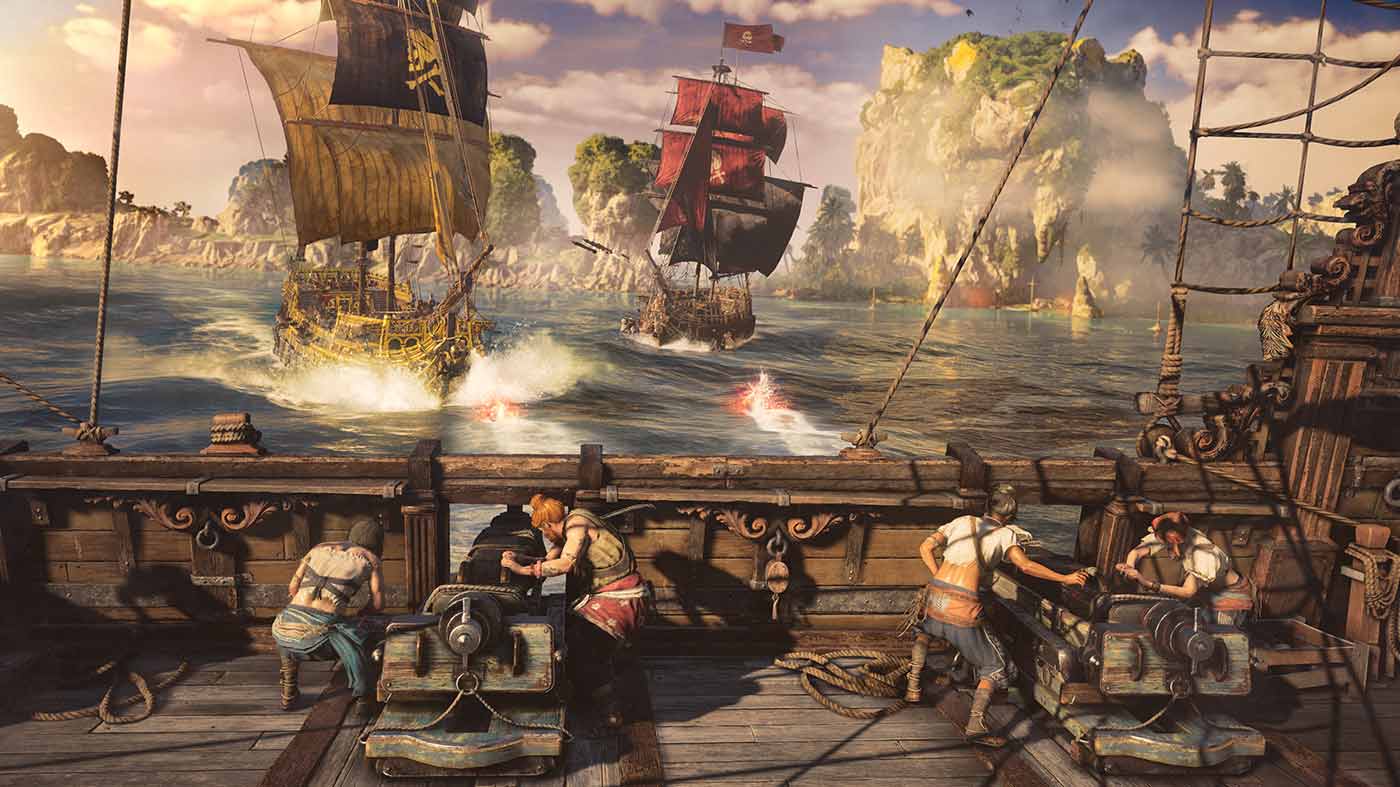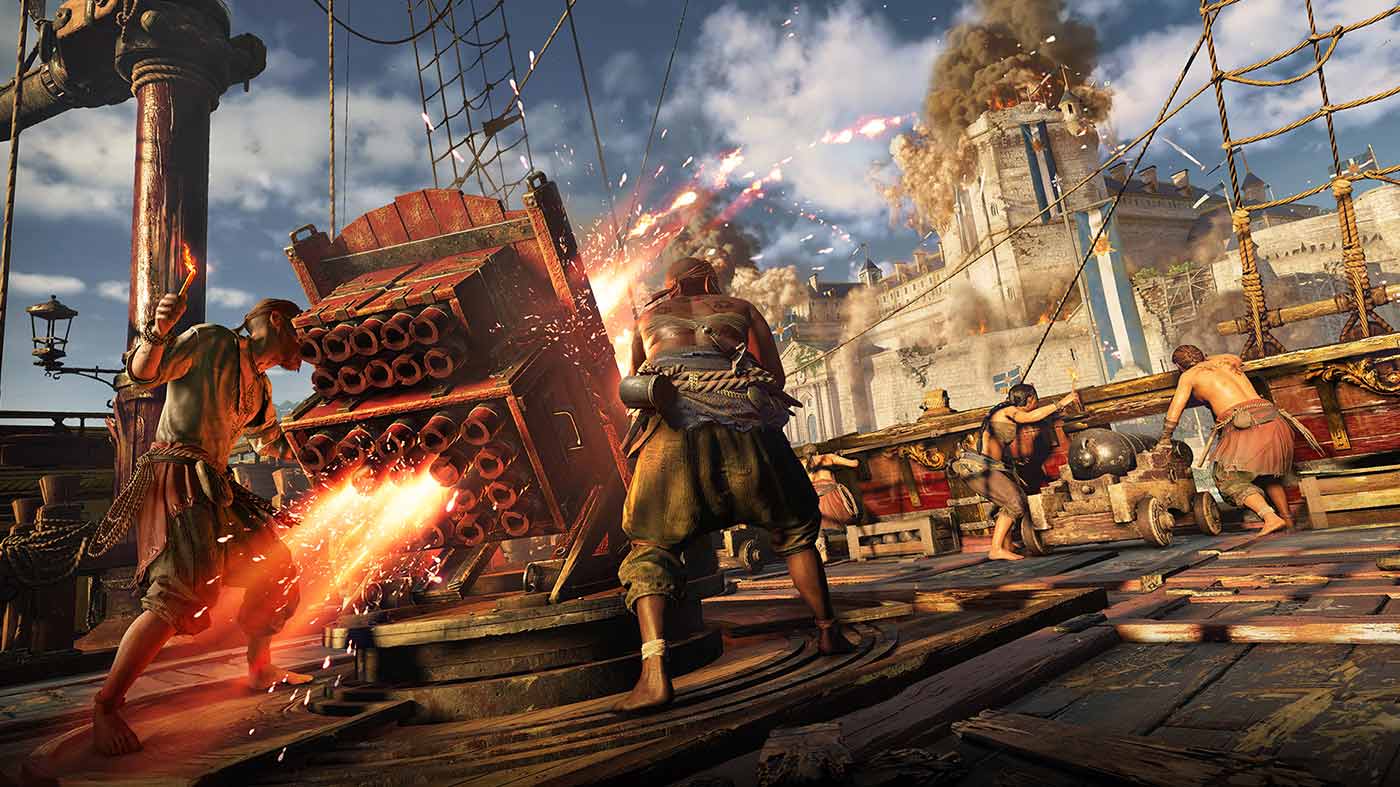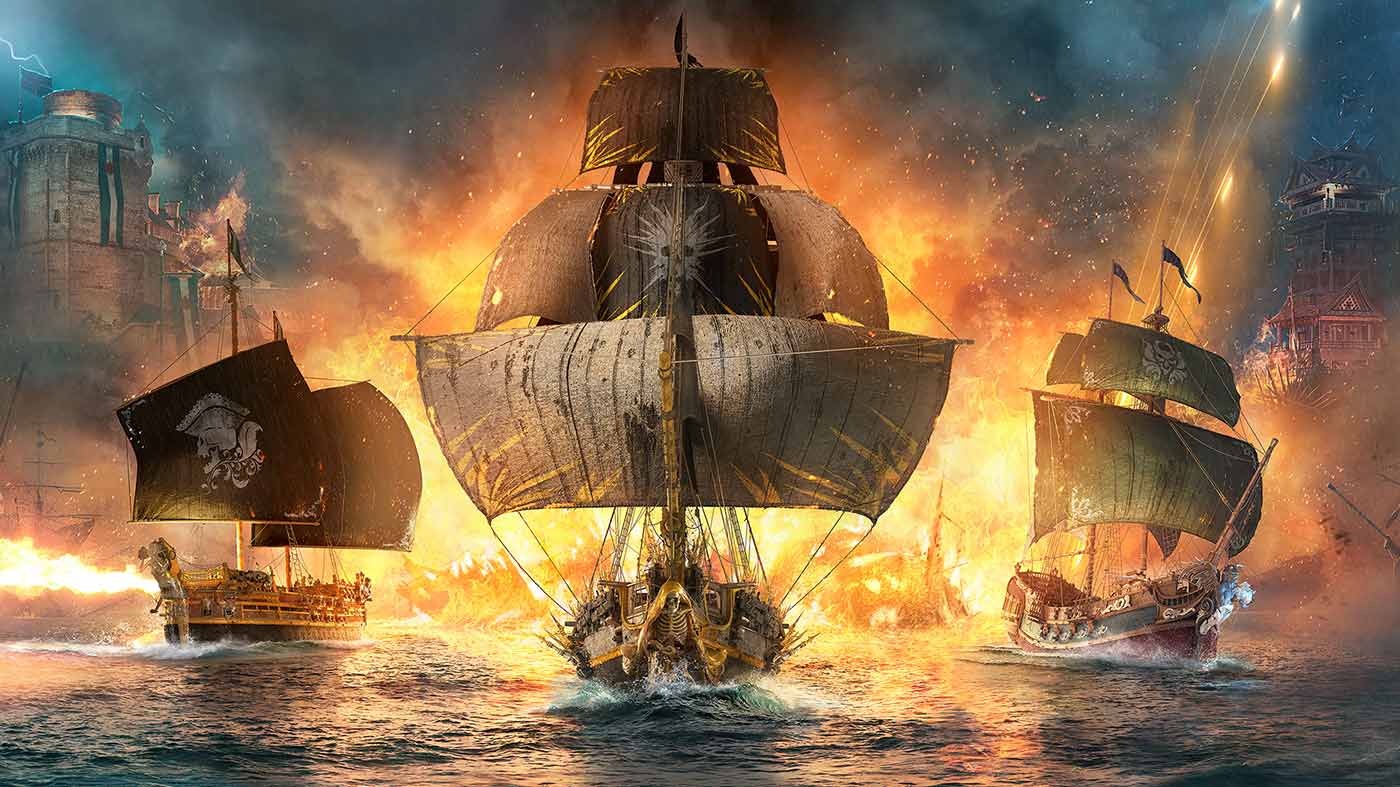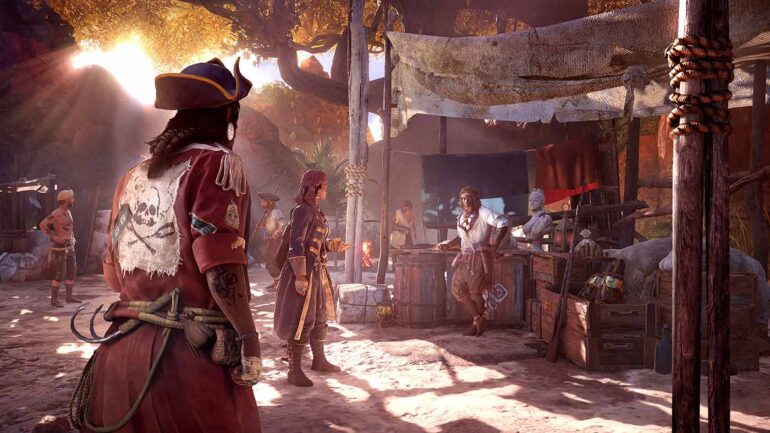Odds are, cully, that you’ve probably read some variation of the following introductory paragraph in coverage of Skull and Bones, Ubisoft’s live-service pirate adventure game, about as many times as the game has reportedly been through development hell. It’s an industry wide narrative that’s impossible to escape in any coverage of the game, which finally launches this Friday after several years of false starts, but it’s not hard to see why.
The allure of such a tale is as gold to a pirate, the ubiquity and size of Ubisoft making such an evidently turbulent development cycle all the more visible and compelling. At least sitting across from the game’s Project Manager Jessica Chung and Content Director Gabriel Tay, the two do a tremendous job of projecting a better vibe than the game has had for some time.
Given the protracted, and hugely public, development time for Skull and Bones, it’s impossible to find yourself in front of anyone from Ubisoft Singapore and not ask how they’re feeling about the whole ordeal. “Oh, amazing! The team is super excited.” Beams Tay when asked about the vibe in the studio right now, his enthusiasm undeniably evident as we finally broach launch day for this troubled ship. “We even have a countdown clock just like running throughout the studio and everyone’s excited to have the game finally in players hands.”

It’s a nice image, the team behind a fairly publicly, if not derided then at least dissected, title finding its sea legs in the home stretch. As with most game development though, nice images are painstakingly drawn and Skull and Bones’ eventual clarity of purpose took years of constant player feedback and careful management. “Ultimately we want to build the game that players want to play,” said Tay of the game’s extensive use of community testing feedback, “because we get direct feedback from our most passionate players, we really want to incorporate as much of these bits of feedback into the game. There’s definitely still the aspect of us looking through what will be the most impactful kind of changes and the ones that fit Skull and Bones the most.”
By tapping directly into player-led feedback, sourced from countless Ubisoft insider testing alphas of the game, Chung reflects on how her job has been changed by the approach, “I think the data really helped us in a lot of our planning on what features that we really need to focus on,” she said, “as a project manager, it’s really nice to have that data to focus the team. And of course, the team knows that it’s coming from real players, so that makes it even more real and more exciting to actually work on something that players really want.”

This kind of adaptive development isn’t winding down either. Skull and Bones is launching into a fairly crowded live-service market, and its evolving relationship with its soon-to-be wide-open player base will be used to steer through waters that are proving choppy for many studios right now. “We’re constantly listening” says Tay, chewing on the future of the game, “we’re paying attention to feedback as we release each season, and we’re balancing the kind of vision we want to deliver as well as what players want. There is a lot of opportunity for that dialogue between developers and the players, and we’re really excited to engage with players to really build the kind of game they want.”
So, they’re listening, but the question on many player’s minds right now is around the initial buy-in for Skull and Bones. A rather steep price tag accompanies the additional attention cost of investing in a new live-service experience, something both Tay and Chung are optimistic about overcoming with the game’s core systems. “Our take on Skull and Bones is really what sets us apart, a game that’s really focused on deep naval combat is, I think, really unique in this space,” says Tay, all hands and gestures as he excitedly explains, “And I think with the level of customization we’re offering to players in terms of ships, the playstyles, the weapons they can equip, there’s really a broad canvas for players to play with and engage with… and our grounded pirate fantasy is something that we don’t really see a lot in the market.”

There is certainly something about the pirate lifestyle that seems destined to work for video games, an overlap between two distinct styles of power fantasy and romanticised history. And while Tay waxes poetic about the ideals of freedom during piracy’s golden age, for Chung the appeal is far more visceral. “It’s really the constant feel of danger and threat!” she says, “In the world of Skull and Bones, there’s a lot of things that will kill you… but the reward is so good. So balancing that kind of feeling, it’s really what a pirate feels like. And of course, you can make friends, but you can also make enemies.” Here we shared a laugh at the potential collision course between live players and Skull and Bones’ cutthroat world, though Chung very politely said of player’s potential PVP griefing proclivities, “you can choose to.”
All of these system considerations and online elements are housed in a game that Ubisoft Singapore wanted to play, gently, with history. According to Tay and Chung, a considerable amount of research went into the writing and worldbuilding of the game, and striking the right balance between realism and romanticism was key to crafting the game’s tone and direction. While players can of course look forward to some heightened elements like the heavily promoted ghost ship battle, the core of Skull and Bones is somewhat more grounded in its expansive economic and trade systems, allowing you to establish your own micro-economy for profit.

“It’s really about striking that balance,” said Chung on the push and pull between fantasy and reality in Skull and Bones, “and part of it is also for us as developers, we wanted to have fun and ask what if these things existed in the real world? And we wanted to kind of straddle that line. And I think we found a nice position between these two elements and I think players will be really excited to see these things alive in our world.”
As our time together wrapped up, we riffed on Assassin’s Creed Black Flag, the 2013 progenitor for Skull and Bones. “We know the legacy we’re coming from and we really want to acknowledge that and build upon the strengths of that game,” said Tay, “Black Flag really introduced players to that strong pirate fantasy and we really wanted to take it to the next level. So we really dive deep into the whole naval combat, really increasing the level of customization and at the same time taking the Indian Ocean itself, not featured as much in games, and we really want to showcase it in a completely different light.”
Skull and Bones is available now for PS5, Xbox Series X|S and PC. Amazon has the game for $89 with free shipping.



